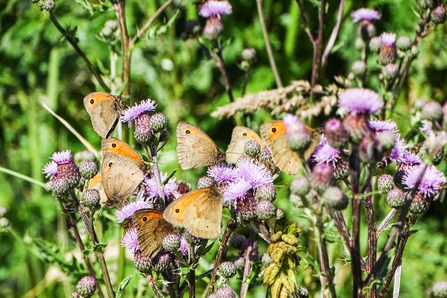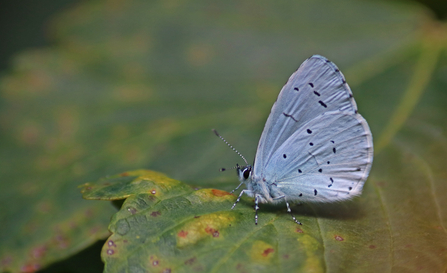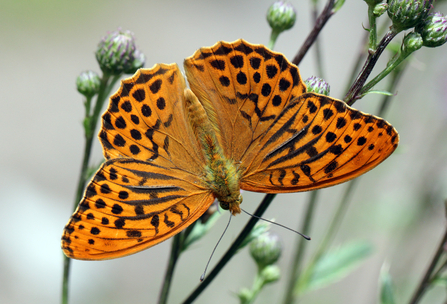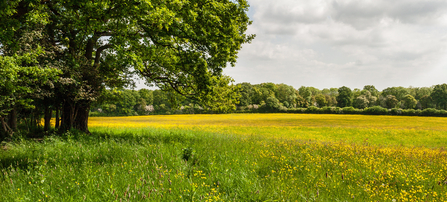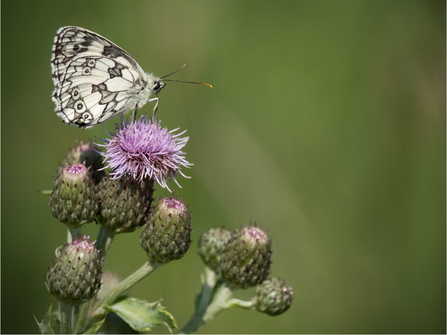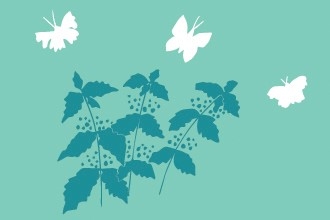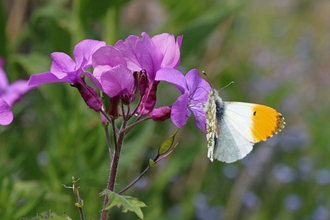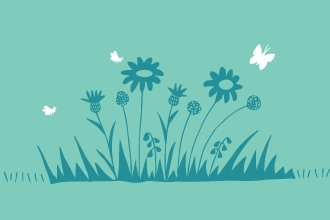With the typically British weather staying with us for most of July, some of our plans at Green Farm have been delayed slightly as we wait for drier weather.
I’ve recently spent many hours in rain and heavier rain at Monkwood debating whether it’s too wet underfoot to track heavy materials across the meadows to improve the access for humans, horses and vehicles. After a particularly thorough soaking one Friday, we reached the tipping point where we’d do more harm than good to the meadows by driving across stone, wooden posts and wire netting so we decided to postpone our mid-summer activities. This isn’t unusual for the reserves team! We can plan and plan then plan some more but, ultimately, we’re always in the lap of the weather gods when delivering outdoor projects. The access improvements, new fencing and gates will all get done at some stage.
The saving grace for some of our wildlife has been that, despite the rain, it has stayed fairly warm. So, between the showers, butterflies emerge from wherever they’ve taken shelter and get back to feeding and breeding! Many of our summer butterfly species took a hammering from the drought and high temperatures last summer so it’s been wonderful to see them bounce back this year. Monkwood is well-known for being home to many kinds of butterflies, both woodland specialities and more widespread ones that you’d find in gardens, meadows and parks too. So much so that it was given the designation of a Site of Special Scientific Interest back in 1987 for its butterfly interest. Walking through on a warm day in late July, you can easily see why.


